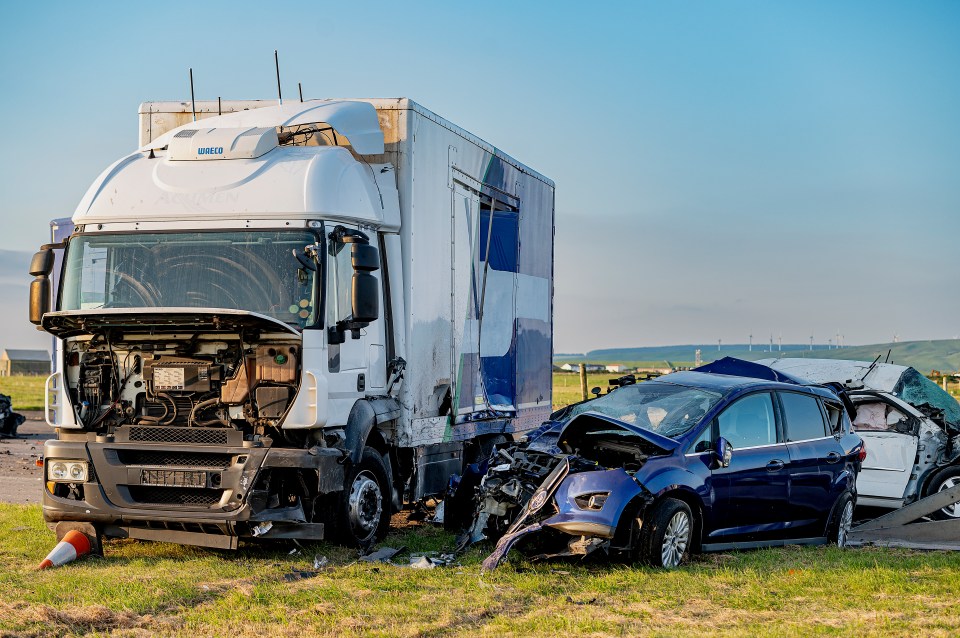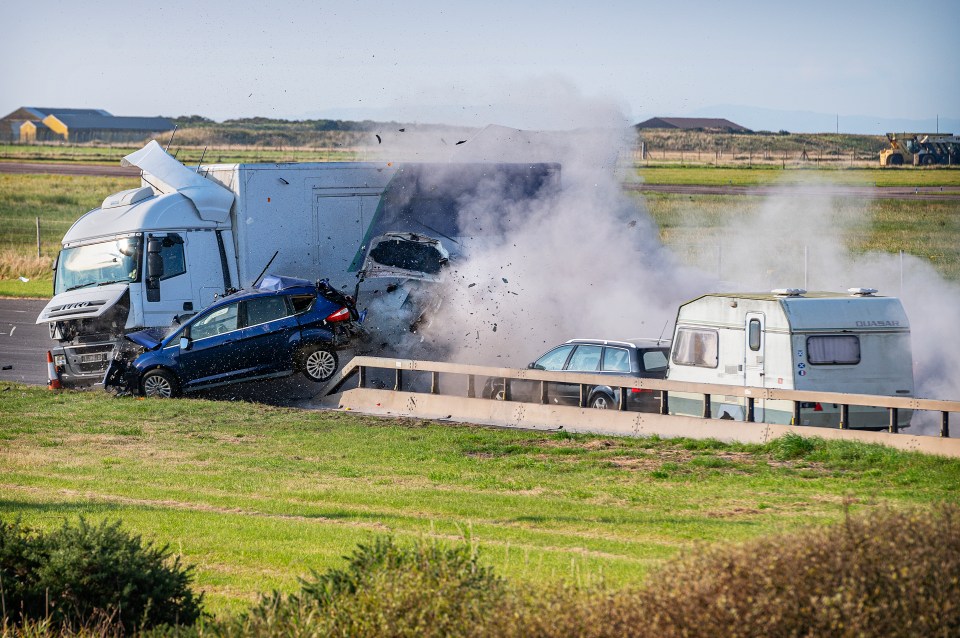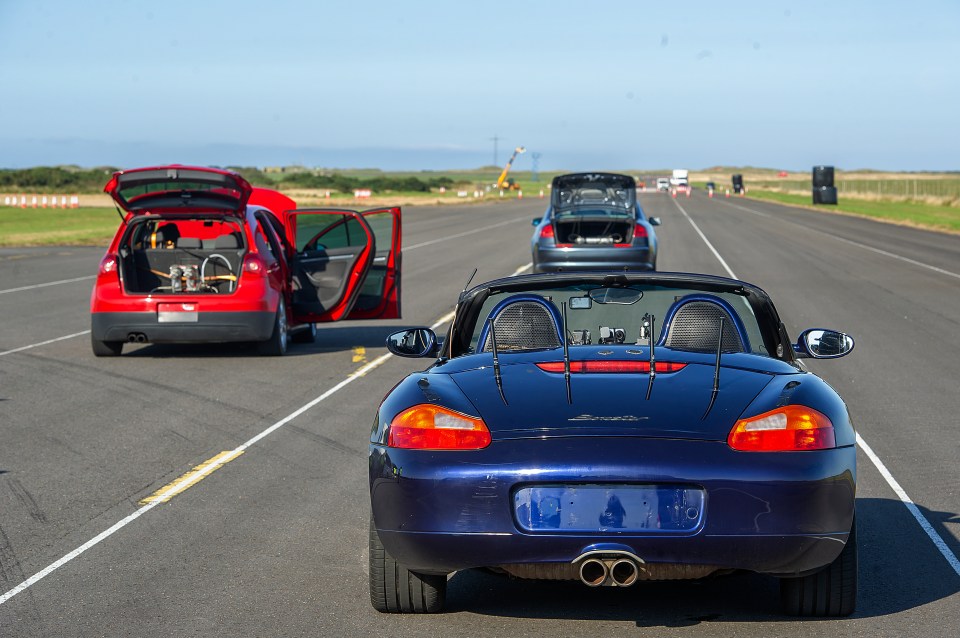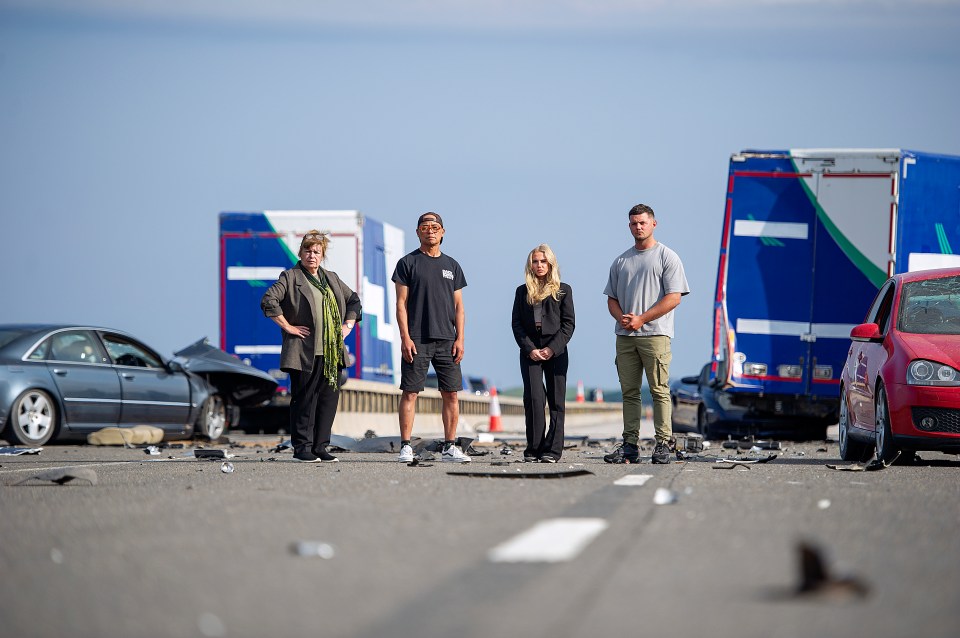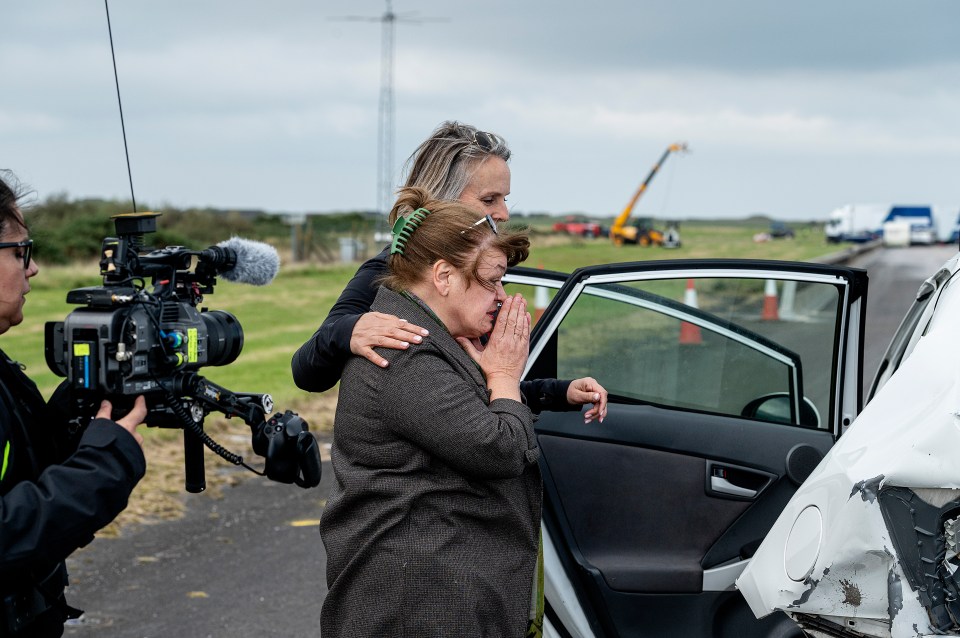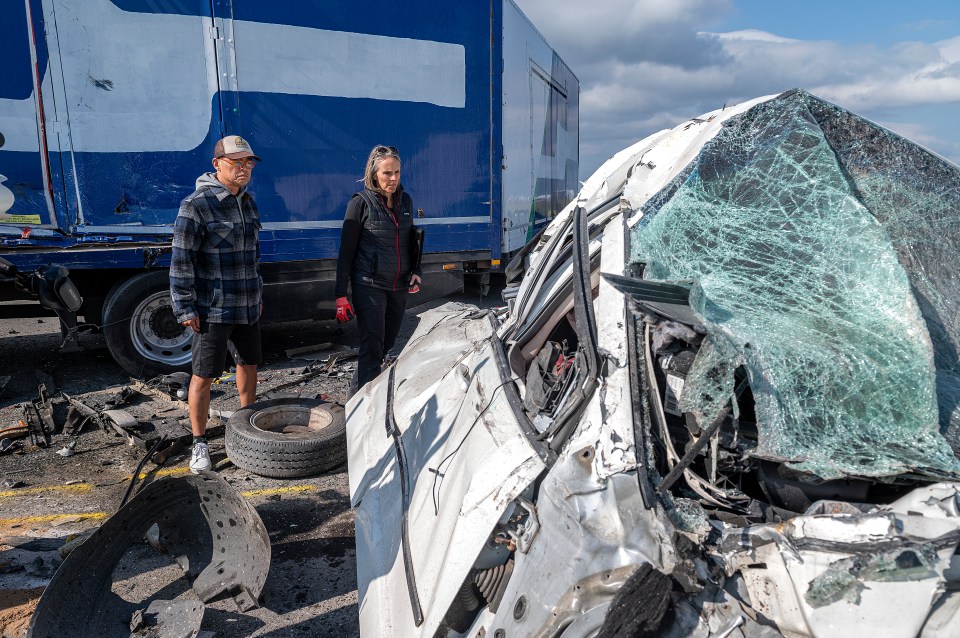THIS is the moment a huge pile-up takes place on a motorway, involving multiple cars, a caravan and a huge 30-tonne heavy goods vehicle.
But while the destruction and terror brought about by the incident are all very real, not all is as it seems.
Indeed, the high-speed crash was all part of a carefully planned experiment conducted as part of a Channel 4 documentary titled Pile Up – The World’s Biggest Crash Test.
Carried out at a former RAF base in Scotland, the experiment involved recreating a high-speed motorway pile-up with eight vehicles and a 30-tonne lorry.
The cars involved were a Toyota Prius, Porsche Boxster, Volkswagen Golf GTI, Ford F-150, Audi A8, Dodge Grand Caravan, Mercedes ML and a Vauxhall Vivaro van.
The team used an almost 2-mile-long stretch of road, which was presumably an aircraft runway, and included white lines, a hard shoulder and motorway-grade varioguard barriers to make everything as realistic as possible.
Professor James Brighton and his team from Cranfield University’s Advanced Vehicle Engineering Centre led the study, which thankfully utilised cars that were remote-controlled from ‘pods’ but driven at motorway speeds.
Four members of the public took part, each selected to represent a cross-section of road users.
To make the pile-up as realistic as possible and to capture genuine reactions, the four selected drivers had no knowledge of the true nature of the experiment.
They were revealed as 19-year-old Caitlyn, who represents inexperienced drivers aged 17 to 24; Luke, 26, a “boy racer,” reflecting young male drivers who account for 65% of serious injuries or deaths; 66-year-old Lynn, representing older drivers aged 60+; and Tito, 57, a surfer and international driver familiar with UK and US road differences.
All four believed they were taking part in an experiment to improve motorway safety and advance their driving skills and were unaware they would be involved in a high-speed multi-car pile-up.
As they drove along at speed, a lorry swerved into their lanes to simulate a pile-up.
Over 90 cameras, drones and black boxes were used to capture the moment of impact, recording crash dynamics, vehicle data and driver reactions.
The experiment provides valuable insights into crash dynamics, safety systems and human behaviour during multi-vehicle accidents, while also highlighting areas for improvement in vehicle design and accident analysis.
The aftermath of the crash replicated several intricate details, such as a car sliding under the lorry and also demonstrated crumple zones, which are effective at absorbing impacts and saving lives.
Statistics on road safety
- Multi-vehicle crashes: Account for nearly 20% of all fatal road accidents in the UK (2020 data)
- Frequency of accidents: Someone is killed or injured on British roads every 16 minutes
- Injury and death rates: In 2022, almost 75,000 car occupants were injured, and nearly 800 died
- Speeding: 45% of UK drivers exceed motorway speed limits; speeding is a factor in 24% of fatal crashes
- Seatbelt use: 24% of drivers killed weren’t wearing seatbelts
For example, despite a massive rear shunt from a van, the Prius’ electric battery remained intact.
Afterwards, Marcus Rowe, a crash investigator, was sent to the scene of the accident – having not witnessed the crash – to figure out what happened using crash forensics.
One concerning finding was that airbags might not always deploy and largely depend on where the vehicle is hit, showing that safety systems can struggle with multiple impacts.
One thing that can’t be determined is a driver’s reaction in the heat of the moment, as one panicked motorist accelerated into the lorry, despite having come to a stop safely.
Lastly, it found that the hard shoulder is a dangerous place to be, as any drivers or passengers in the cars on the mock-up hard shoulder would most likely have lost their lives.
Speaking on the experiment, David Twohig, an Automotive Engineering Consultant, said: “The beauty of a lab-based crash test is everything is controlled.
“Everything is repeatable, but unfortunately, the real world is not a laboratory, and there are many, many variables.
“It might be the weather conditions, it might be the friction of the road surface, it might be temperature, humidity, the state of the driver, the mood of the driver – so I think that’s the limitation of the lab, it’s almost too good.”
Pile Up – World’s Biggest Crash Test airs Sunday 15 June at 9pm on Channel 4.
